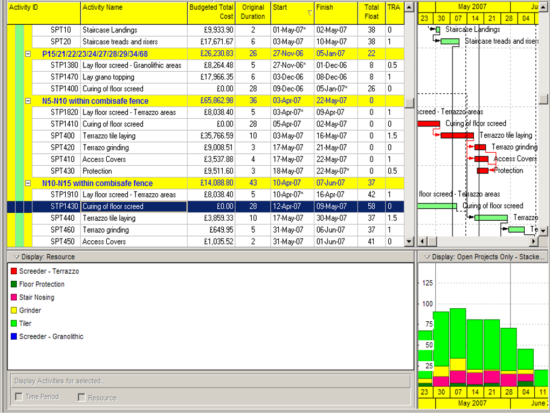

The NEC family include contracts for a variety of different contractual arrangements that could be necessary on a project. The previous bulletin (no 44) looked in more detail at the Professional Service Contract (PSC) and this bulletin will consider the application and key features of the NEC Supply Contract (SC).
The Supply Contract is not currently widely used within the industry and has the potential to benefit parties entering into a contractual arrangement for providing materials (rather than using a simple purchase order which has fewer rules and sanctions if the supplier defaults).
What is the intended use for a Supply Contract?
It is intended to be used to appoint a Supplier to provide materials, particularly where the materials are of significant value and/or requiring bespoke design. There are no different primary options for the Supply Contract and it is simply a single option contract, being a combination of options A and B used in the Engineering and Construction Contract (ECC). It is intended to be used for supply only, rather than supply and install (for which the ECC or ECSC contract may be more suitable).
Parties: The parties involved in a Supply Contract are the Purchaser and the Supplier.
Secondary options: Secondary options allow the Purchaser to adjust the risk profile to balance cost certainty and risk. There are several of the same secondary options available for the Supply Contract as there are in the ECC contract (which have been explored in more detail in CECA bulletin no.3). These include X1(inflation), 2(changes in law), 3(multiple currencies), 4(ultimate holding company guarantee), 7(delay damages), 10(information modelling), 11(termination), 12(multiparty collaboration), 13(performance bond), 14(advanced payment), 17(low performance damages), 18(limitation of liability), 20(key performance indicators, and 21(whole life cost).
In addition there is one unique secondary option used for the Supply Contract which is X25 Supplier Warranties. The type and the amount of the warranty will be detailed within the Scope.
Defined Terms: Whilst some defined terms will be familiar from other NEC contracts (e.g. Accepted Programme, Early Warning Register), due to the nature of the works there are some specific defined terms that are applicable to the Supply Contract. These include Delivery, Delivery Date, Delivery Place and to Provide the Goods and Services.
Supply Manager: The Supply Manager is the equivalent role to that of the Project Manager in the ECC contract and will be appointed by the Purchaser to act on their behalf. The appointed person will be responsible to issue instructions, accept submissions, agree compensation events and issue notifications. The Supply Manager has a duty to act impartially and in accordance with the contractual rules, which in turn should limit the likelihood of disputes and formal adjudications that may otherwise occur. The Supply Manager can delegate any of their responsibilities, providing the delegation is confirmed in writing and issued separately from other forms of communication to the Supplier.
Commonality of processes with ECC: Most of the CECA bulletins produced to date have been based on ECC or ECS contract wording, but most of the elements discussed in those bulletins will be relevant and transferable to the elements of the Supply Contract. The clauses around communication flow (section 13), early warning process (section 15), programme requirements (section 3), quality management (section 4) and compensation event process (section 6) are very similar in terms of clause numbers, wording and principles.
Contract Data: Again, very similar to the ECC contract data. Contract Data part 1 will state important project information on which the Supplier will base their tender price upon, including:
- description of goods and services
- who the Purchaser and Supply Manager are
- what documents form the Scope
- period for reply
- starting date and delivery dates
- defect date and defect correction period
- assessment intervals
- insurance provisions
It includes a statement as to whether the purchaser is willing or not for the Supplier to deliver the goods to the Delivery Place more than one week in advance of the Delivery Date.
Contract Data part 2 is completed by the Supplier prior to signing the contract and will include the Suppliers contact details, fee percentage, the Price List and senior representatives.

Programme: There are similar but slightly reduced content requirements for a programme compared to that of the ECC contract. The items the Supplier needs to include on the programme include the starting date, Delivery Date, planned Delivery, order and timings of operations, dates when Supplier will need access/acceptances/Plant and Materials from Purchaser, as well as details of acceptance tests or inspections. Within two weeks the Supply Manager should accept the programme or give reasons for not accepting. If the Supply Manager does not respond within two weeks the Supplier may notify that fact, and after a further week of non-response the programme would be “deemed accepted”.
Revised programmes should be issued at intervals no longer than that stated in Contract Data Part 1 (typically monthly or every four weeks) reflecting progress and the impact upon the remaining works as well as any other changes the Supplier plans to make. The latest programme accepted by the Supply Manager supersedes previous Accepted Programmes.
Quality Management: There are very similar processes in the Supply Contract compared to the ECC contract in terms of the requirement for:
- complying with a quality management system
- carrying out tests and inspections
- searching for defects
- correcting defects within the defect correction period
- accepting defects where the Supplier, in return, offers reduced Prices
- uncorrected defect costs being assessed by the Supply Manager and recovered from Supplier

Payments: The Supplier is paid each period the “Price For Goods and Services Provided to Date”. The Price List that is created at tender stage may contain items that are a lump sum, and others that are quantity related with a unit price against them. The Supplier is paid each period for any completed lump sum items (like ECC option A) and where a quantity is stated for an item, an amount calculated by multiplying the quantity which the Supplier has completed by the rate stated (like ECC option B). The assessment interval will be stated in Contract Data 1. The Supplier must apply by the assessment date each period otherwise the Supply Manager may assess the application that period as zero.
Compensation events: In the NEC4 Supply Contract there are eighteen valid reasons for compensation events, compared to the twenty-one reasons listed in the ECC contract. The reasons are very similar, the obvious omissions in the Supply Contract being unforeseen physical conditions and weather as these will not be relevant for this type of engagement. The list includes no.16 which is where the Supply Manager gives an instruction to correct a mistake in the Price List. The process and timescales for notification, quotation, assessment and implementation are then the same principles of that of the ECC contract. It also includes clauses (section 65) for dealing with proposed instructions, which require the Supplier to provide a quotation for proposed works, which will then enable the Supply Manager to decide if they wish to instruct them or not.
Delay Damages: If the Supplier delivers materials later than the Delivery Date, then they will be liable for delay damages per day at the rate stated in Contract Data Part 1. The Delivery Date stated in Contract Data may be moved to a later date via implemented compensation events, or via agreed acceleration under section 35.
Schedule of Cost Components: Probably the biggest Supply Contract change from NEC3 to NEC4 is the fact that there is now a similar (but slightly condensed) version to that of the ECC Schedule of Cost Components used to assess Defined Cost. In the NEC3 Supply Contract, compensation events were assessed as Defined Cost which was made up of the costs of people, equipment, plant and materials to be included in the goods, and transport.
NEC4 Supply Contract now uses a Schedule of Cost Components for compensation event assessments. These are based upon amounts for:
- Manufacture and fabrication
- Equipment
- Plant and Materials
- Subcontractors
- Design
- Test, inspections and commissioning
- Supply Requirements
- Insurance
Items 1, 6 and 7 are categories unique/relevant to Supply Contracts. For a compensation event which only affects the quantity of goods and services in the Price List, the Supply Manager and Supplier may agree to use these rates. Otherwise, the cost is built up from the relevant elements of the schedule of cost components, to which the Supplier will also apply their fee percentage stated in Contract Data Part 2.
Supply Short Contract (SSC)
As with all the short contracts, the SSC is a simpler set of contractual rules compared to the full SC for more straightforward low-risk work. It simplifies the amount of administration required between the parties where the works are less complex. There are no option clauses X1-25 to choose from, but instead some of the options are incorporated into contract data such as delay damages and limitations of liability. It also includes an option in the short contract to have the goods delivered in Batch Orders with a “batch order interval” stated in contract data. The details of Batch Orders are covered in section 23 of the contract.

Summary
The Supply Contract is applicable where a Purchaser is looking to purchase goods from a Supplier. It contains many of the same processes that are included in the ECC contract and is administered on behalf of the Purchaser by a Supply Manager. As with any of the contracts within the NEC suite, they have similar principles, language, processes and requirements. Knowing one contract within the family would mean working with another contract should feel very familiar and be quick to understand.

